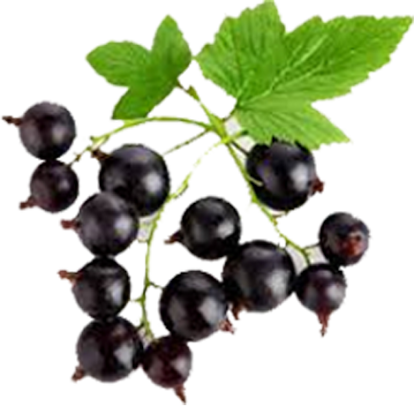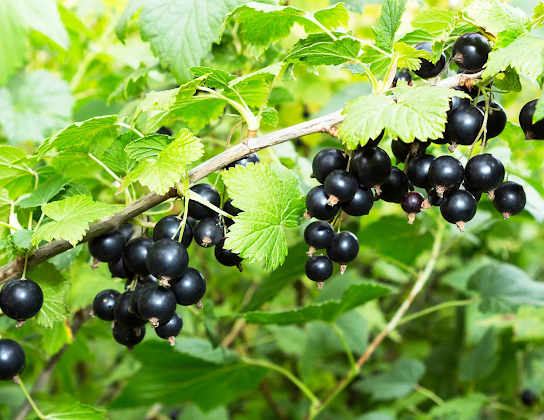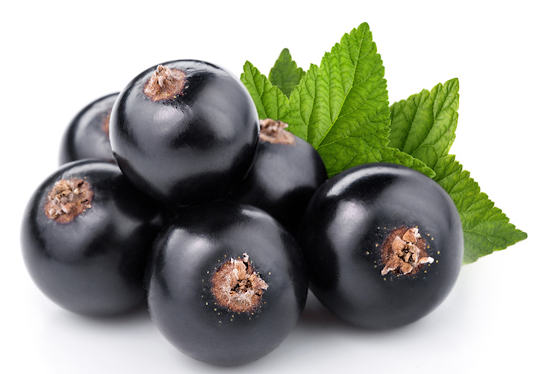Angola Black Fruit
The Black fruit is not
actually black; it's a dark purple color. The fruit is similar to a
pomegranate, except it doesn't have seeds inside. The Black fruit comes from
the same family as the plum and cherry, so they tend to have similar
characteristics, including being high in sugar content. However, the Black
fruit has a higher water content than other fruits, making it a great choice if
you're looking for a snack or treat.
Black fruit grows best in warm climates, so if
you live somewhere where summers aren't quite so hot (like California), then go
ahead and try them out! They do need a little bit of sun during their harvest
season, but once the fruit gets ripe enough, it continues to ripen even after
picking, so don't worry about losing any time waiting for it to mature. You'll
know when it's ready when it starts to turn brown around the edges, and when
its juices start oozing out of the center. Once ripe, these berries will keep
well in your fridge for about 10 days. If you want to eat one right away, slice
it open and scoop out the juice. Then enjoy!
Where do Angola Black Fruit trees grow
Mangrove forests are found
along coastal regions around the globe. They may look like barren mudflats, but
these ecosystems provide many services. Mangroves protect coastlines. Their
roots stabilize sediment and prevent erosion. They filter water and decrease
the effects of storm surges. Mangroves help regulate ocean temperatures and
create microclimates. These ecosystems serve as nurseries for fish and
shellfish. Mangroves also act as carbon sinks. In fact, mangrove forests
sequester more carbon than tropical rainforests. There are currently about 200
species of mangroves worldwide. Many of them have been declared endangered due
to human encroachment.
A few countries including
France, Portugal, and Spain are known to have extensive mangrove forests.
However, Angola is home to the largest mangrove forest in Africa and the third
largest on the planet. Angola’s mangroves are located along the Atlantic Ocean
near Cuanza Norte Province.
The first mention of
Angola’s mangalores was reported in 1892 by French botanist Henri Mereles. He
wrote that he had witnessed over 500 species of plants while traveling through
the country. These plants were mostly indigenous to the area and included some
species not found anywhere else in the world at the time. Most of the mangroves
found in Angola are saltmarsh mangroves. Salt marsh habitats are typically low
lying environments filled with grasses and reeds. Mangroves are unique to
tropical climates and are tolerant to saltwater flooding. The topography of Angolan
mangroves is similar to that of their African counterparts.
Angola's mangroves cover
approximately 1,500 square miles. The largest mangrove forest contains over 6
million acres of land and supports over 100 different species of birds,
mammals, reptiles, amphibians, and invertebrates. About 80 percent of Angola’s
coastline lies within the mangrove biome. Mangrove forests are estimated to
store over 2 billion tons of carbon. While deforestation of the region
continues, efforts are being made to preserve the area. Some of those efforts
include planting of mangroves and maintaining current tree populations.
What is Angola dark organic fruit?
Angola Dark Organic fruitis really a tropical organic fruit known for its sweet taste, high dietary benefit,
and restorative properties. The organic fruit comes from similar family as
mangos yet has an alternate shape. There is no logical evidence with respect to
what precisely makes the natural fruit unique. In any case, many individuals
accept that it is because of the way that it contains a higher measure of fiber
than some other sort of organic fruit. It additionally contains the most
noteworthy measures of Vitamin B6 and L-ascorbic acid, both important elements
for good wellbeing.
The natural fruit is
plentiful in vitamin A, iron, zinc and manganese. While the natural fruit may
not necessarily in every case associate with, making a delightful juice from
these berries is conceivable. To do this first wash them completely and
afterward cut off the top and lower part of each berry and eliminate the seeds.
Then, crush out the mash. You ought to utilize new pressed squeeze instead of
canned or packaged as it holds the full kind of the natural fruit. Add 2-3
tablespoons of sugar for some juice relying upon how start your natural fruit
is.
Angola Dark Natural fruit Assortments
Angola Dark
The Angolan assortment of
Dark Seed is local to Angola and has been developed for north of 4,000 years.
Its name comes from its dull variety and rich smell. It's a decent, flexible
seed. It has significant returns, protection from infection and bugs, short
blooming time, and early gather.
African Blueberry/Dark Cherry
A hybrid of Dark Currants and American Wild
Plums. African Blueberries have a sweet taste with traces of poignancy. They're
an incredible expansion to any organic fruit mixed drink recipe. They're
low-developing and conservative. They're frequently confused with blueberries,
truth be told!
Black Mulberry
A weighty yielder,
mulberry trees are developed for their natural fruits. Dark Mulberries are
little, sweet, succulent berries ideal for jams, jams and pies.
Dark Peach
The Dark peach is a famous
tree in southern states because of its wonderful blooms and delectable organic fruit.
These peaches taste really heavenly, and are loaded with L-ascorbic acid and
cancer prevention agents.
Black Raspberry
Dark raspberries are
better than red ones. They're more modest and more sensitive, and will quite
often mature later in the season. They additionally hold their shape well once
picked.
Black Plum
Dark plums were acquainted
with North America from Europe during the 1800s. Dark plums are known for being
very scrumptious, yet strong to chilly climate. Their tissue has a smooth
surface, without any seeds inside. You can eat them crude, use them in sauces
or squeeze recipes, or even make jam out of them!
Black Pecan
Dark pecans are really
nuts, and not an organic fruit by any means. They are viewed as a delicacy in
China, Japan, India, and Africa. When completely ready, they tumble off their
branches like a raindrop.
Black Yaupon
Dark yaupon was initially
brought to North America by the native individuals of the southeast coast. It's
said to further develop memory, diminish circulatory strain, fortify bones, and
assist with building muscle. Different names for the Dark yaupon incorporate
hopwood, sassafras, and wild ginger.
Black Zinfandel
Dark zinfandels are a
crossover grape made in California's Focal Valley locale. They have a profound
purple skin and a brilliant, fruity flavor. The wine business involves them for
making port-style wines.
Bitter Chocolate Berry
A hybrid of Dark currant
and chocolate berry.
Blood Orange
An orange with dark red
shading. Name comes from crimson juice streams forward when you cut open a
blood orange. There are numerous assortments of blood oranges. Assortments
incorporate Meyer, Seville, Cara, Tarocco and Pomerol.
Blueberry
Blueberries are a sort of
berry that fills in calm districts. Blueberries have a long history of
development, going back more than 5,000 years. They have a tart taste and smell
like cranberries.
Brazil Nuts
Brazil nuts will be nuts
that fill in South America. They're local to the Amazon Waterway bowl. They're
collected by hand utilizing sledges and blades. The nuts require exceptional
taking care of since they can separate whenever dropped.
Catawba Cherries
Catawba cherries are a
most loved cherry of the individuals who appreciate sharp flavors. They're
accepted to begin from North Carolina, where they're called 'Prunus serotina'.
Angola Dark Organic fruit Accessibility in Tamilnadu
The Angolan Dark organic fruits
have as of late acquired prominence across Tamilnadu because of their high
healthful substance, cancer prevention agent properties, low cholesterol and
high fiber content.
It is a rich wellspring of
L-ascorbic acid, beta-carotene, Vitamin A, iron, zinc, copper, fiber and cell
reinforcements. These natural fruits likewise help in improving resistance.
The overflow of
precipitation and water system makes the Angolan Dark Natural fruits well known
in Tamilnadu.
Beginning of Angola Dark Organic fruit
In Africa, Angola Dark
organic fruits started from tropical woodlands in focal Africa.
Notwithstanding, they are currently developed around the world.
There are four kinds of
Dark Natural fruits - Angico, Anacardio, Sapecai and Almond.
A review directed in
Portugal showed that Anacardio was related with more significant levels of
polyphenols and anthocyanins, while almonds had the most noteworthy measure of
vitamin E.
Agribusiness and Nuisance Control Practices
Dark natural fruits are
planted along side of the road, at transport stops, rail line stations, air
terminals and so on. In Tamil Nadu, establishing them is denied in metropolitan
regions.
Natural fruit trees need
full sun and water. Watering ought to be done two times per day and a mulch layer
spread around the tree base holds dampness.
Irritations might go after
the organic fruit, making harm the blossoms.
Creation Status
Tamilnadu produces about 10 lakh tonnes annually.
















0 Comments:
கருத்துரையிடுக
Thanks for Read the post